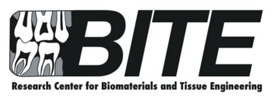Palatine suture obliteration method for age estimates of burn victims with minimal tooth remains: a case report
Downloads
Background: A disaster is a serious disruption in the functioning of a society that can cause many losses. It can be caused by nature or humans. When the loss of life is on a large scale, the recovery process is made more complicated by simultaneous identification operations. Biological profiling is of paramount importance when investigating cases; the age at which a victim dies is crucial for reconstructing the victim’s life. Purpose: The purpose of this case study is to highlight the utility of palatal suture obliteration as a valuable indicator for age estimation in adults, especially when there are minimal remaining dental elements that make age estimation by other methods of dental analysis impossible. Case: The author presents a case of burn victims due to a fire disaster in the fuel oil terminal area in Jakarta that killed several victims. As they were found in a visually unrecognizable condition, without identity documents, and in a state where the victims’ teeth left few dental elements, effort is needed to assist in identifying the victims, including victim age estimation techniques with ideal methods that can be applied in the field. Case management: The Crow-Glassman Scale (CGS) is used to describe the extent of burns to tissue remnants. On external examination, all body parts showed the burns reaching level 3 CGS. The victim is estimated to be over 50 years old. Decision making is based on the guidelines of the Mann method, wherein if more than 50% of the anterior median palatine suture is obliterated, then the minimum estimated age is 50 years. Conclusion: The obliteration of the palatal sutures can be used as supporting evidence when considered alongside other more reliable age indicators that can narrow down the age of unidentified individuals.
Downloads
de Boer HH, Blau S, Delabarde T, Hackman L. The role of forensic anthropology in disaster victim identification (DVI): recent developments and future prospects. Forensic Sci Res. 2019; 4(4): 303–15. doi: https://doi.org/10.1080/20961790.2018.1480460
de Boer HH, Roberts J, Delabarde T, Mundorff AZ, Blau S. Disaster victim identification operations with fragmented, burnt, or commingled remains: experience-based recommendations. Forensic Sci Res. 2020; 5(3): 191–201. doi: https://doi.org/10.1080/20961790.2020.1751385
Gilbert SW, Butry DT. Identifying vulnerable populations to death and injuries from residential fires. Inj Prev. 2018; 24(5): 358–64. doi: https://doi.org/10.1136/injuryprev-2017-042343
Adserias-Garriga J, Wilson-Taylor R. Skeletal age estimation in adults. In: Age estimation: A multidisciplinary approach. Academic Press; 2019. p. 55–73. doi: https://doi.org/10.1016/B978-0-12-814491-6.00005-4
Prakoeswa BFWR, Kurniawan A, Chusida A, Rizky BN, Darmawan AI, Aisyah AKN, Alias A. Using the Demirjian method for estimating the dental age of children in Surabaya, Indonesia. Dent J. 2023; 56(2): 87–91. doi: https://doi.org/10.20473/j.djmkg.v56.i2.p87-91
Anjani RCS, Artaria MD, Singsuwan P, Arunorat J, Mahakkanukrauh P. Biological identification of skulls in indonesian and thai populations: ancestry estimation, sex determination, stature estimation, and age estimation. Int J Morphol. 2024; 42(1): 137–46. doi: https://doi.org/10.4067/S0717-95022024000100137
Carazo MS. Application of the maxillary suture obliteration method for estimation of the age at death of prisoners in the Valdenoceda Francoist Prison. Bioarchaeology Balk. 2017; : 85–90. web: https://www.researchgate.net/publication/320558611
Mann RW, Jantz RL, Bass WM, Willey PS. Maxillary suture obliteration: a visual method for estimating skeletal age. J Forensic Sci. 1991; 36(3): 781–91. pubmed: https://pubmed.ncbi.nlm.nih.gov/1856646/
Cappella A, Cummaudo M, Arrigoni E, Collini F, Cattaneo C. The issue of age estimation in a modern skeletal population: Are even the more modern current aging methods satisfactory for the elderly? J Forensic Sci. 2017; 62(1): 12–7. doi: https://doi.org/10.1111/1556-4029.13220
Savoldi F, Xu B, Tsoi JKH, Paganelli C, Matinlinna JP. Anatomical and mechanical properties of swine midpalatal suture in the premaxillary, maxillary, and palatine region. Sci Rep. 2018; 8(1): 7073. doi: https://doi.org/10.1038/s41598-018-25402-y
Mann RW. Maxillary suture obliteration: a method for estimating skeletal age. University of Tennessee, Knoxville; 1987. p. 1–93. web: https://trace.tennessee.edu/utk_gradthes/4142
Ruengdit S, Prasitwattanaseree S, Mekjaidee K, Sinthubua A, Mahakkanukrauh P. Age estimation approaches using cranial suture closure: A validation study on a Thai population. J Forensic Leg Med. 2018; 53: 79–86. doi: https://doi.org/10.1016/j.jflm.2017.11.009
Hens SM, Godde K. New approaches to age estimation using palatal suture fusion. J Forensic Sci. 2020; 65(5): 1406–15. doi: https://doi.org/10.1111/1556-4029.14485
Barbosa NMV, Castro AC de, Conti F, Capelozza-Filho L, Almeida-Pedrin RR de, Cardoso M de A. Reliability and reproducibility of the method of assessment of midpalatal suture maturation: A tomographic study. Angle Orthod. 2019; 89(1): 71–7. doi: https://doi.org/10.2319/121317-859.1
Bugelli V, Papi L, Fornaro S, Stefanelli F, Chericoni S, Giusiani M, Vanin S, Campobasso CP. Entomotoxicology in burnt bodies: a case of maternal filicide-suicide by fire. Int J Legal Med. 2017; 131(5): 1299–306. doi: https://doi.org/10.1007/s00414-017-1628-0
Ruengdit S, Troy Case D, Mahakkanukrauh P. Cranial suture closure as an age indicator: a review. Forensic Sci Int. 2020; 307: 110111. doi: https://doi.org/10.1016/j.forsciint.2019.110111
Beauthier J, Lefevre P, Meunier M, Orban R, Polet C, Werquin J, Quatrehomme G. Palatine sutures as age indicator: a controlled study in the elderly. J Forensic Sci. 2010; 55(1): 153–8. doi: https://doi.org/10.1111/j.1556-4029.2009.01237.x
Savoldi F, Wong KK, Yeung AWK, Tsoi JKH, Gu M, Bornstein MM. Midpalatal suture maturation staging using cone beam computed tomography in patients aged between 9 to 21 years. Sci Rep. 2022; 12(1): 4318. doi: https://doi.org/10.1038/s41598-022-08293-y
Copyright (c) 2025 Dental Journal

This work is licensed under a Creative Commons Attribution-ShareAlike 4.0 International License.
- Every manuscript submitted to must observe the policy and terms set by the Dental Journal (Majalah Kedokteran Gigi).
- Publication rights to manuscript content published by the Dental Journal (Majalah Kedokteran Gigi) is owned by the journal with the consent and approval of the author(s) concerned.
- Full texts of electronically published manuscripts can be accessed free of charge and used according to the license shown below.
- The Dental Journal (Majalah Kedokteran Gigi) is licensed under a Creative Commons Attribution-ShareAlike 4.0 International License
















